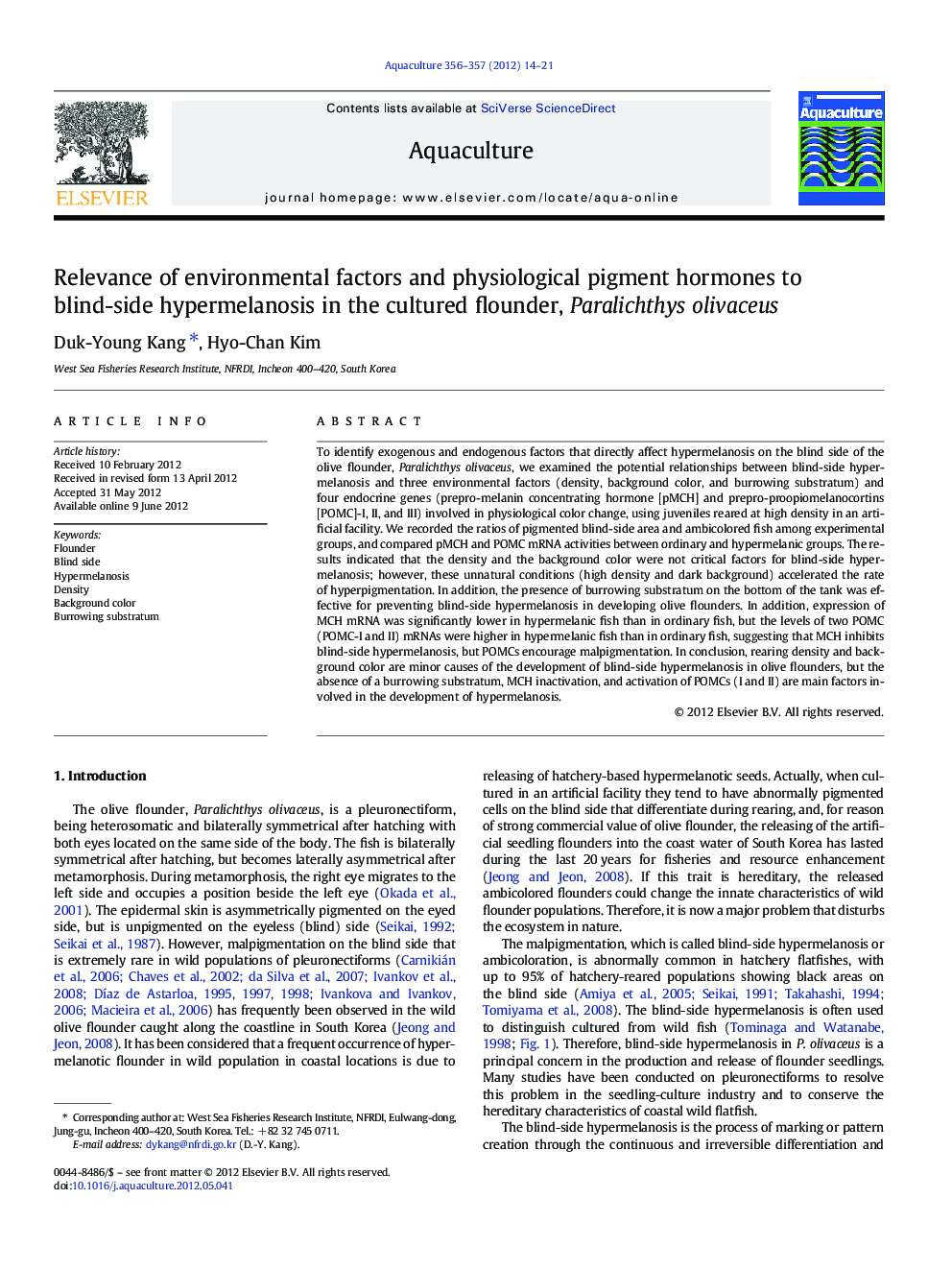| کد مقاله | کد نشریه | سال انتشار | مقاله انگلیسی | نسخه تمام متن |
|---|---|---|---|---|
| 2422542 | 1552888 | 2012 | 8 صفحه PDF | دانلود رایگان |

To identify exogenous and endogenous factors that directly affect hypermelanosis on the blind side of the olive flounder, Paralichthys olivaceus, we examined the potential relationships between blind-side hypermelanosis and three environmental factors (density, background color, and burrowing substratum) and four endocrine genes (prepro-melanin concentrating hormone [pMCH] and prepro-proopiomelanocortins [POMC]-I, II, and III) involved in physiological color change, using juveniles reared at high density in an artificial facility. We recorded the ratios of pigmented blind-side area and ambicolored fish among experimental groups, and compared pMCH and POMC mRNA activities between ordinary and hypermelanic groups. The results indicated that the density and the background color were not critical factors for blind-side hypermelanosis; however, these unnatural conditions (high density and dark background) accelerated the rate of hyperpigmentation. In addition, the presence of burrowing substratum on the bottom of the tank was effective for preventing blind-side hypermelanosis in developing olive flounders. In addition, expression of MCH mRNA was significantly lower in hypermelanic fish than in ordinary fish, but the levels of two POMC (POMC-I and II) mRNAs were higher in hypermelanic fish than in ordinary fish, suggesting that MCH inhibits blind-side hypermelanosis, but POMCs encourage malpigmentation. In conclusion, rearing density and background color are minor causes of the development of blind-side hypermelanosis in olive flounders, but the absence of a burrowing substratum, MCH inactivation, and activation of POMCs (I and II) are main factors involved in the development of hypermelanosis.
► High density and dark background accelerated the blind-side hypermelanosis.
► Inhibitory effect of bright background on the hypermelanosis is density-dependent.
► Only when PCA is under 200%, bright background inhibited the hypermelanosis.
► Burrowing substratum prevented actually the spread of the hypermelanosis.
► Malpigmented fish showed high MSH activity and low MCH activity.
Journal: Aquaculture - Volumes 356–357, 1 August 2012, Pages 14–21